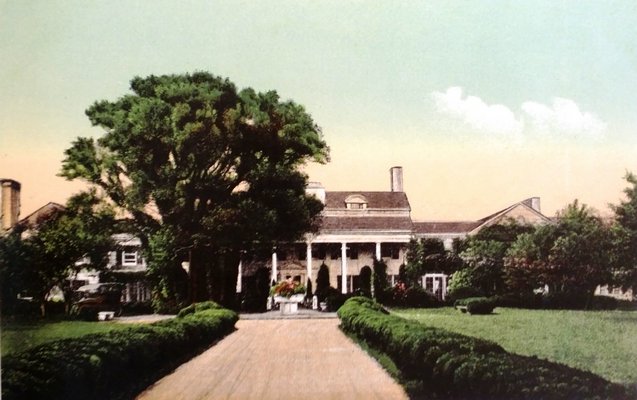
The Whitefield Condominiums in Southampton, which were once a farmhouse and then an estate known as “the Orchard,” are named for the architect Stanford White, who influenced the design of the house as well as the surrounding garden in the later years of his career.
Although it now houses condos, the structure still appears the way it did in Stanford White’s time, at least from the outside. “People should hold Whitefield up high as an example of adaptive reuse,” said Gary Lawrance, an architect and author of the book “Houses of the Hamptons 1880-1930,” which is a fixture on East End coffee tables. “Developers could have built additional structures to increase the overall square footage of the property, but the integrity of the exterior remains very much intact,” he said in a phone interview this week.
On Thursday, August 14, Mr. Lawrance will give a lecture on the evolution of the “not-so-simple house with a simple name” as it has changed hands but kept the same essential form. The 45-minute talk, entitled “The Orchard” and staged by the Southampton Historical Museum, will be given at the condominiums, which are at 155 Hill Street.
“The Orchard” was originally renovated for financier and photographer James L. Breese in 1895 from a 1850s Greek Revival house once owned by a sea captain during the heyday of Southampton’s whaling industry. Mr. Breese had been close friends with Stanford White, the red-moustached architect who is as well known for having been assassinated on top of Madison Square Garden—a building he designed—as he was for the Gilded Age mansions he built for many of New York’s elites.
In fact, Charles Merrill, one of the co-founders of the financial firm Merrill Lynch, later bought a subdivided portion of the estate in 1926. The talk will also detail the lavish life that the Merrills lived during their tenure at the Orchard.
The lecture will take place in what is called the “music room,” which some consider the most magnificent part of the Orchard. Mr. Breese and Mr. White designed the room themselves, transforming it from its previous form as a small rustic studio and redecorating it in the Italian Renaissance style.
The Aeolian pipe organ on the north end of the room exists to this day, according to Mr. Lawrance, Stanford White was overseeing renovations on the music room the very same day he met his fate at the Garden.
Mr. Lawrance’s 45-minute talk, which is the Southampton Historical Museum’s second annual Samuel L. Parrish lecture, will be followed by a reception in the garden of the 16-acre estate.
Tickets for the event, which runs from 5 to 7 p.m., cost $125 for museum members and $140 for non-members. Reservations are required by Tuesday, August 12.